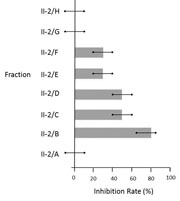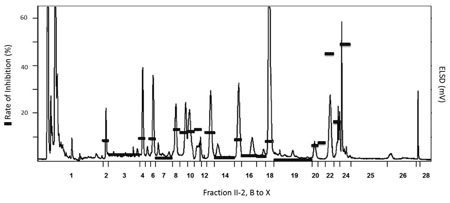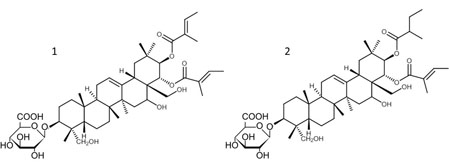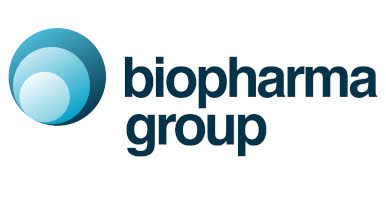Hyperglycaemia is seen as a major pathogenic factor in the development of acute and chronic diabetic complications such as diabetic ketoacidosis, retinopathy, nephropathy and stroke. Lowering post-prandial blood sugar excursions is a focus in diabetes research and prevention programmes.
Glucose is transported through biological membranes via the facilitative (GLUT) and sodium-dependent (SGLT) glucose transporters. Both kinds of glucose transporters are currently targets in diabetes therapy. Inhibitors of SGLT2 have been developed that effectively increase glucose excretion via urine, and for this purpose are in clinical use. To date, there are only a handful of studies published on natural SGLT1 inhibitors.
Several medicinal herbs have been used in Asia for many centuries as hypoglycaemic agents, their bioactive phytochemicals as well as their mechanisms of action remain elusive however. The objective of the present study was to evaluate the SGLT1 inhibiting activity of Gymnema sylvestre, one of a number of herbs used in traditional Chinese medicine as hypoglycaemic agents.
Preparation of extract
Dried leaves of Gymnema sylvestre (300g) were ground to a fine powder, sequentially extracted with pentane (2x2L), with methanol/water (7/3 v/v; 2x2L) and, finally, with methanol (2x2L). The latter two polar extracts were combined, solvents were separated by means of a Genevac Rocket evaporation system (Figure 1) and the remaining residue was lyophilised to provide the polar fraction II.
When deciding on a method of sample preparation, a freeze dried product was desirable because of the ease of handling of the final compound (fluffy, weighable solid). Freeze drying requires the removal of organic solvents prior to the lyophilisation process. Unfortunately, methanol and aqueous methanolic extracts of G. sylvestre are liable to foaming, making it impossible to remove the solvents by rotary evaporation. The Genevac Rocket evaporator, however, allowed for unattended removal of either the organic phase or both solvents, in addition to eliminating all foaming concerns.
The Rocket Sample Genie flask system enables samples to be dried directly into an appropriate vial of choice. Vials are attached to a SG3-003 250mL capacity flask by means of a special adapter and support collar. Solvent in the flask is evaporated leaving the dried product in the vial, which can then be detached. genevac-040614-012. This eliminates time-consuming sample transfer steps, which can also reduce recovery.
Using the Rocket evaporator with Sample Genie flasks, it was possible to dry 1350mL of aqueous or aqueous methanolic extract, equivalent to 6x250mL flasks, in a single day. In addition, the dried product was recovered in detachable vials; utilising pre-weighed vials allowed for straightforward determination of the extraction yield.
SGLT1 inhibitory activity of Gymnema extracts
To identify the phytochemicals exhibiting SGLT1 inhibitory activity, functional analysis was performed by two electrode voltage-clamp recordings of glucose associated transport currents in Xenopus laevis oocytes that had been microinjected with the cRNA for hSGLT1.
To isolate the SGLT1 inhibitors in Gymnema sylvestre, polar fraction II was separated by means of RP-MPLC using water (fraction II-1), followed by flushing the column with methanol (fraction II-2) as the solvent. Following organic solvent evaporation and lyophilisation, fractions II-1 and II-2 were both used for the SGLT1 bioassay.
Fraction II-2, showing SGLT1 inhibition, was further separated by normal phase column chromatography to afford eight fractions, namely II-2/A to II-2/H, which were again tested for their SGLT1 inhibitory activity (Figure 2). Subfraction II-2/B showed the highest SGLT1 inhibition rate of 80% and was, therefore, further fractionated by means of preparative RP-HPLC.

Inhibition of hSGLT1 transport currents, which were induced by α‐methylglucose (1mM) in the presence of fractions II‐2/A−II‐2/H isolated from Gymnema sylvestre
A total of 26 HPLC fractions were collected, separated from organic solvent using a Genevac Rocket evaporation system, freeze dried and used for analysis of their SGLT1 inhibitory activity in their natural concentration ratios (Figure 3).

Inhibition of hSGLT1 transport currents which were induced by α‐methylglucose (1mM) in the presence of individual HPLC fractions in natural concentration ratios prepared from Gymnema sylvestre fraction II‐2
By far the highest SGLT1 inhibition rates of 45 and 48%, respectively, were found for the HPLC fractions 22 and 24, the structures of which were identified by means of LC-MS/MS, UPLC-TOF-MS and 1D/2D-NMR experiments as gymnemic acid V (1) and XV (2) (Figure 4).

Chemical structures of hSGLT inhibitors gymnemic acid V (1) and gymnemic acid XV (2)
Conclusion
Although gymnemic acids have been reported to decrease blood glucose level in rats after an oral glucose load, the mechanism of action was unclear. Using the hSGLT1 bioassay, this study demonstrates gymnemic acids as high-affinity SGLT1 inhibitors, amongst which gymnemic acid V and XV were found as the key molecules, with the strongest GLT1 inhibitory activity, in Gymnema sylvestre. As SGLT1 is found in high levels in brush-border membranes of the intestinal epithelial cells, our findings demonstrate the potential of these triterpenoid-saponins for inhibition of electrogenic glucose uptake in the GI tract.
About the Authors
Yu Wang, Corinna Dawid, Stephen Pickrahn are Research Associates, Thomas Hofmann is the Head of the Chair of Food Chemistry and Molecular Sensory Science, at Technische Universität München, Freising, Germany. Gabor Kottra is a Research Associate, Hannelore Daniel is the Head of the Chair of Physiology of Human Nutrition, Research Center for Nutrition and Food Science, Molecular Nutrition Unit, Technische Universität München, Freising, Germany. Alison Wake is Product Manager for Genevac Ltd (part of SP Scientific) Ipswich, UK.
Reference
Y. Wang, et al., 'Gymnemic Acids Inhibit Sodium-Dependent Glucose Transporter 1,' J. Agric. Food Chem. 62, 5925‐5931 (2014).

